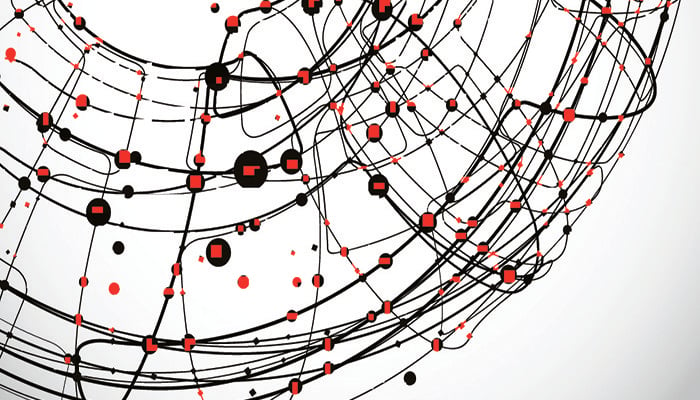4 Challenges Field Service Organisations Adopting IOT Face (And How to Address Them)
Mar 04, 2015 • Features • Future of FIeld Service • future of field service • IFS • IoT • Tom Bowe
The internet of things (IoT) is fast becoming a field service priority as the revelation that IoT can drastically increase customer satisfaction while reducing costs comes to fruition. IoT has the potential to eliminate unplanned downtime, more accurately meet SLAs, inform product development, and improve business decisions and forecasts when it comes to field service processes. IFS's Tom Bowe takes a look at the challenges being faced by companies looking to embrace this brave new world...
Adopting IoT technology can change the dynamic of how your service organisation is run and provide vision into future possibilities and opportunities. None of this is disputed; clearly the benefits of IoT are huge. But field service organisations still face a myriad of challenges, particularly when it comes to meeting growing customer expectations with new market technology that disrupts internal processes, transfer of knowledge, and more. How can field service organisations take the challenges of adopting IoT head-on, and achieve an infallible competitive edge? Here are some suggestions.
Challenge: Lack of a Shared Infrastructure and Common Standards
IoT is actually a complex combination of hardware and software that constitutes a platform for developers and organisations, and the vertical nature of this platform contributes to the fragmentation of its infrastructure (Rachel Kalmar, Forbes 2014). With limited open source platforms, IoT devices are currently installed in their own platforms and ecosystems, which can run up costs and make IoT projects more technically complicated. Additionally the industry has yet to be standardised, including communication protocols and methods. This makes integrations challenging and can hinder scalability as well.
Solution:
Implement technology that has developed IoT functionality but preferably has not tied itself to a specific platform or IoT vendor. Solutions with open APIs will allow easy integration with sensors, etc. and will allow you to grow as the industry changes and develops.
Challenge: Data Control and Data Sharing
Large scale adoption of IOT technology is hindered by issues with data control. Decisions around who can access data, especially private data, must be made. This can be a slippery slope which has yet to be addressed effectively. With remote sensors and monitoring, there is a need for heightened sensitivity to data control. This goes for data sharing as well. Since there are currently little to no compliance frameworks to address IoT’s unique issues, partner vetting needs to be even more critical and details about use of transmitted data will need to be clearly laid out.
Solution:
Don’t wait for standards to be fully defined and approved. Develop your own “standard-inspired” approach by working with your technology vendors on a flexible, OS agnostic pattern and protocol that meets your most important (rev 1) requirements. Make sure that data auditing is part of your software functionality, and align your IoT with existing company security and privacy demands. Consider using the AllJoyn framework which is a developing open-source device agnostic IoT standard with the strongest community and downloadable SDK’s. And keep a watchful eye on the top IoT standard competitors including OIC, IIC, Thread (Google) and IEEE (P2413) for ideas, patterns and best practices.
Challenge: Security
The more devices that IoT connects, the greater the risk of malware and breaches. Devices and sensors are also at risk of being physically comprised. The latest debate of cloud security also applies here.
Solution:
Work with software vendors that have addressed IoT and cloud security. Prepare your IT department to keep up with safety and security measures and explore your platform options before implementing.
Challenge: Implementation and Training
Another challenge that field service organisations potentially face in adopting IoT is in the implementation of sensors or other IoT technology. Will this be a responsibility of your field technicians, or a third party? Either way, re-education and new training will likely be needed. This may lead to more upfront costs and internal adoption challenges.
Solution:
Use forecasting and planning software to predict the change in service demand before, during, and after the roll-out of an IoT initiative. Explore what-if scenarios to see if your current field force can manage an IoT implementation effectively.
According to GE’s Global Innovation Barometer report, 67% of organisations agree that agility and speed in adapting and implementing emerging technologies into their organisation is essential to innovation (Ray Wang, 2014). Being an early adopter of IoT, especially in field service, opens a world of opportunity in regards to new value creation, business models, and revenue streams. It will allow your organisation to create new value for customers, bringing the concept of delighting them to a whole other level.
Face newcomer challenges head on, work with vendors that take an open and scalable approach to new technology, and work to make your field service technology nimble. By doing this, and avoiding a rip and replace mindset, your organisation will be able to reap the intrinsic value of this new technology.





















 Field Service News is published by 1927 Media Ltd, an independent publisher whose sole focus is on the field service sector. As such our entire resources are focused on helping drive the field service sector forwards and aiming to best serve our industry through honest, incisive and innovative media coverage of the global field service sector.
Field Service News is published by 1927 Media Ltd, an independent publisher whose sole focus is on the field service sector. As such our entire resources are focused on helping drive the field service sector forwards and aiming to best serve our industry through honest, incisive and innovative media coverage of the global field service sector.
Leave a Reply